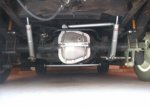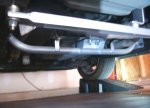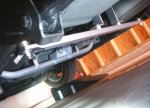cbxer55
Well-Known Member
- Joined
- Oct 9, 2009
- Messages
- 1,894
- Vehicle Year
- 1998
- Transmission
- Automatic
Was in a large empty parking lot today, and did some burnouts for the heck of it. Every time, left two long black tracks on the dry ground. Truck has a 3.73 standard 7.5 axle. Always thought standard axles didn't leave two tracks. Thought one tire spun, while the other hooked.
1998 3.0 auto with a custom catback, no muffler, on stock manifolds and a MAC intake. Two large 255/60-15 Cooper Cobra GT's out back. Also has tightly adjusted Lakewood traction bars. Spins like crazy and does nice burnouts with 155,000 miles on the clock.
Just wondering about the axle. I expect my Lightning to lay two tracks, it has a 3.73 12 bolt 9.75 posi rear. Didn't expect it with the Ranger.
Burnouts done with no brake use, just slamming the petal to the floor with the shifter in first gear from a standing start.
1998 3.0 auto with a custom catback, no muffler, on stock manifolds and a MAC intake. Two large 255/60-15 Cooper Cobra GT's out back. Also has tightly adjusted Lakewood traction bars. Spins like crazy and does nice burnouts with 155,000 miles on the clock.
Just wondering about the axle. I expect my Lightning to lay two tracks, it has a 3.73 12 bolt 9.75 posi rear. Didn't expect it with the Ranger.
Burnouts done with no brake use, just slamming the petal to the floor with the shifter in first gear from a standing start.















